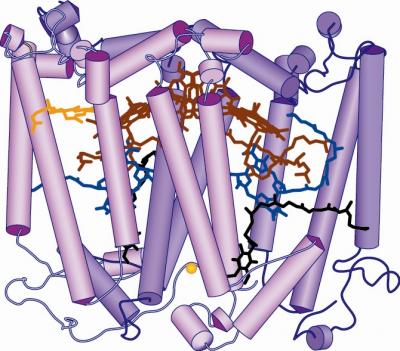
During the remarkable cascade of events in photosynthesis, plants approach the pinnacle of stinginess by scavenging nearly every photon of available light energy to produce food.Yet after many years of careful research into the exact mechanisms, some key questions remain about this fundamental biological process that supports almost all life on Earth.
Now a research team led by Neal Woodbury, a scientist at the Arizona State University (ASU) Biodesign Institute, has come up with a new insight into the mechanism of photosynthesis.
The discovery involves the orchestrated movement of proteins on the timescale of a millionth of a millionth of a second.
“This pioneering research gives us new insights into the basic mechanism of photosynthesis,” said Kamal Shukla, program director in the National Science Foundation Division of Molecular and Cellular Biosciences. “Understanding such basic biological processes can lead to important societal benefits.”
For example, the answer may be good news for the development of organic solar cells, said Shukla, which have been of commercial interest because of their relatively low cost compared to traditional silicon solar cells.
Traditional solar cells use semi-conductor devices (silicon chemistry) to convert solar energy into electricity, whereas organic solar cells are based on biological systems that use the same chemistry as living organisms to harvest the energy of sunlight to drive photosynthesis.
So, inspiration for the design of organic solar cells would be based upon the principle of photosynthesis.
Woodbury’s research is focused on understanding the basic principles of photosynthesis and it could be valuable in the design of organic solar cells. The efficiency of energy conversion by photosynthesis is much higher than traditional solar devices.
To get a closer look at what happens during photosynthesis, the research team used a well-studied purple photosynthetic bacterium named Rhodobacter sphaeroides. This organism is likely one of the earliest photosynthetic bacteria to evolve.
The researchers focused their efforts on studying the center stage of photosynthesis, the reaction center, where light energy is funneled into specialized chlorophyll-binding proteins.
Woodbury and his colleagues tried to uncover more of the physical mechanism driving photosynthesis by creating mutants that would tweak the electron transfer relationships between molecules in the reaction center.
The researchers started to inch closer to an answer when Haiyu Wang, a postdoctoral research associate in Woodbury’s lab, noticed something in common with all of the different mutants: a similarity in how fast electrons moved in the reaction center. He decided that there must be some sort of underlying physical principle involved.
Few research groups are equipped to measure the early events in photosynthesis because of the extremely short timescale–similar to the amount of time it takes a supercomputer to carry out a single flop.
Wang used ASU’s ultrafast laser facility, funded by NSF, which acts like a high-speed motion picture camera that can capture data from these lightning-fast reactions.
The movement of the reaction center proteins during photosynthesis allows a plant or bacteria to harness light energy efficiently, even if conditions aren’t optimal.
The findings are described in the journal Science, and were funded by NSF.
The research team includes lead author Haiyu Wang, ASU Biodesign Institute; Su Lin, ASU Biodesign Institute; James Allen, ASU Department of Chemistry and Biochemistry; JoAnn Williams, ASU Department of Chemistry and Biochemistry; Sean Blankert and Christa Laser, ASU Biodesign Institute.